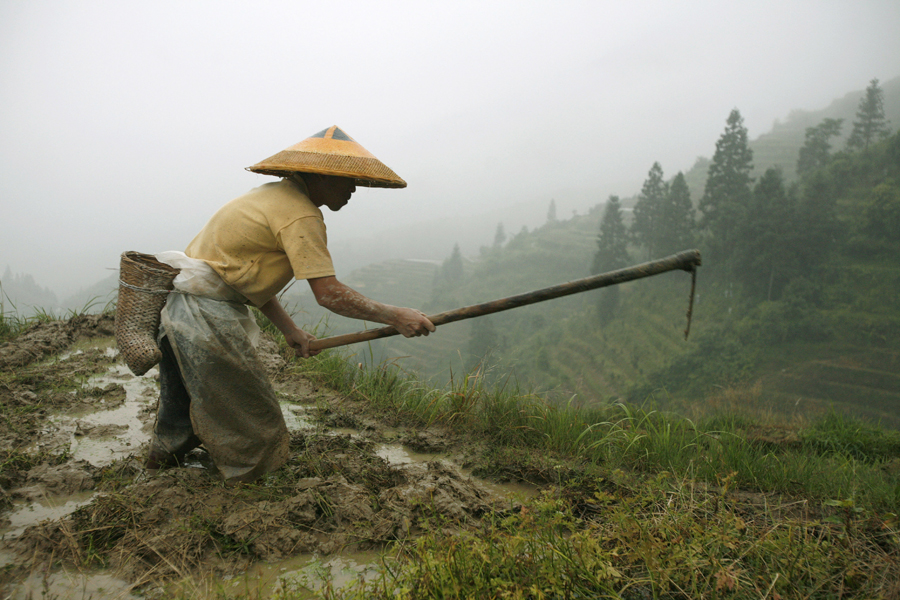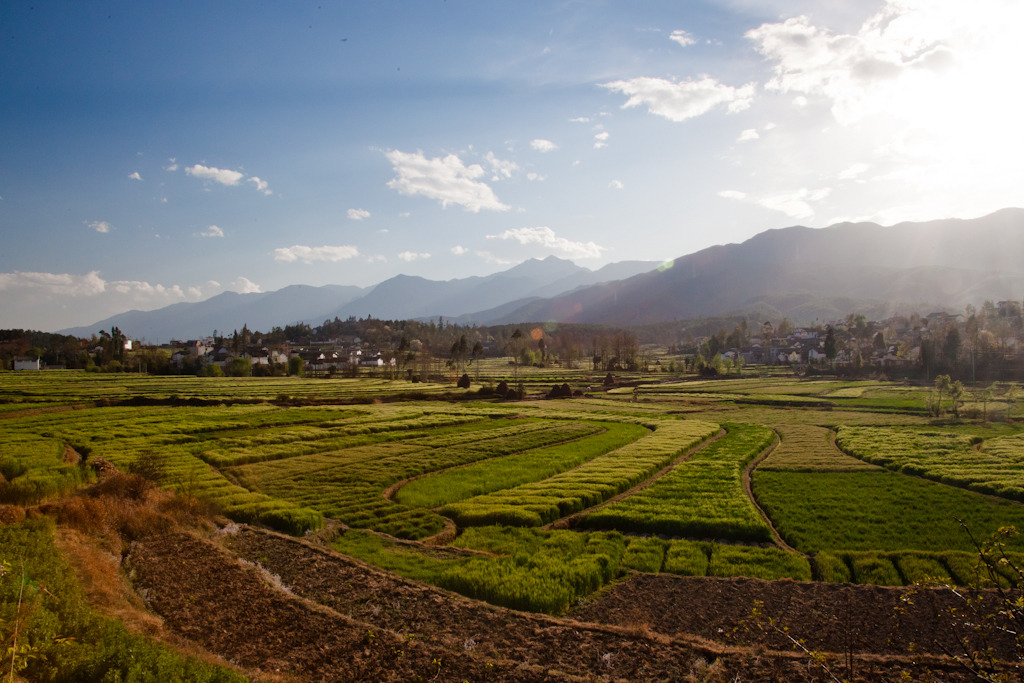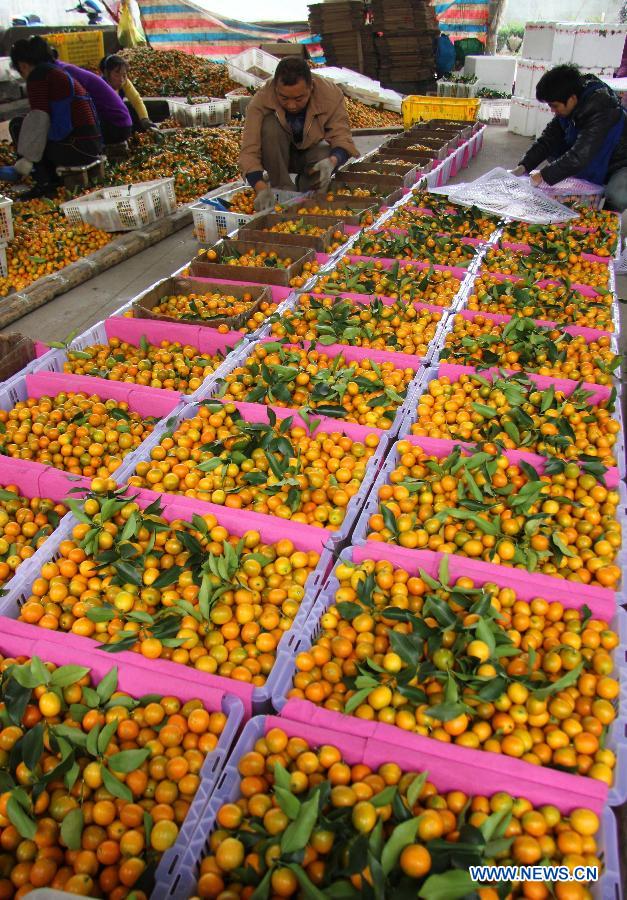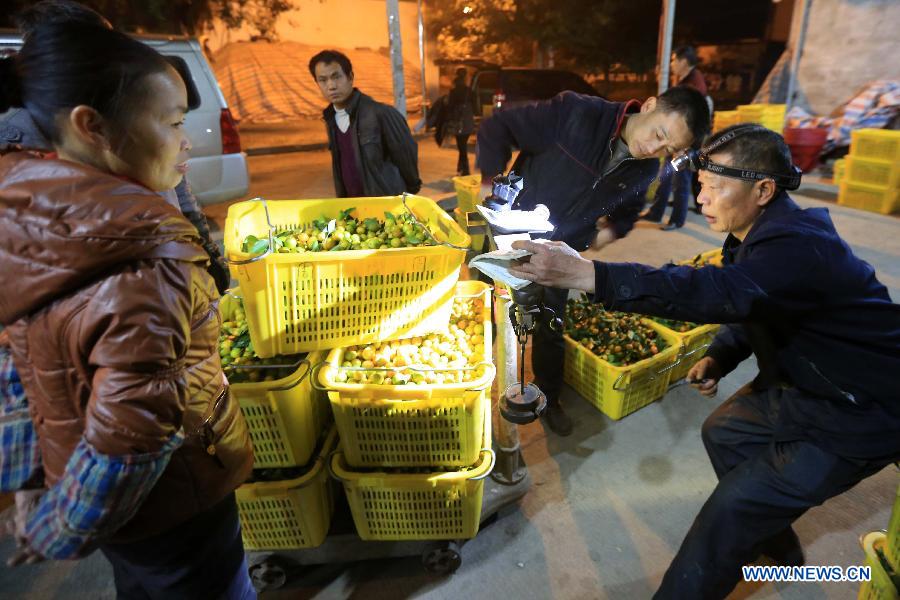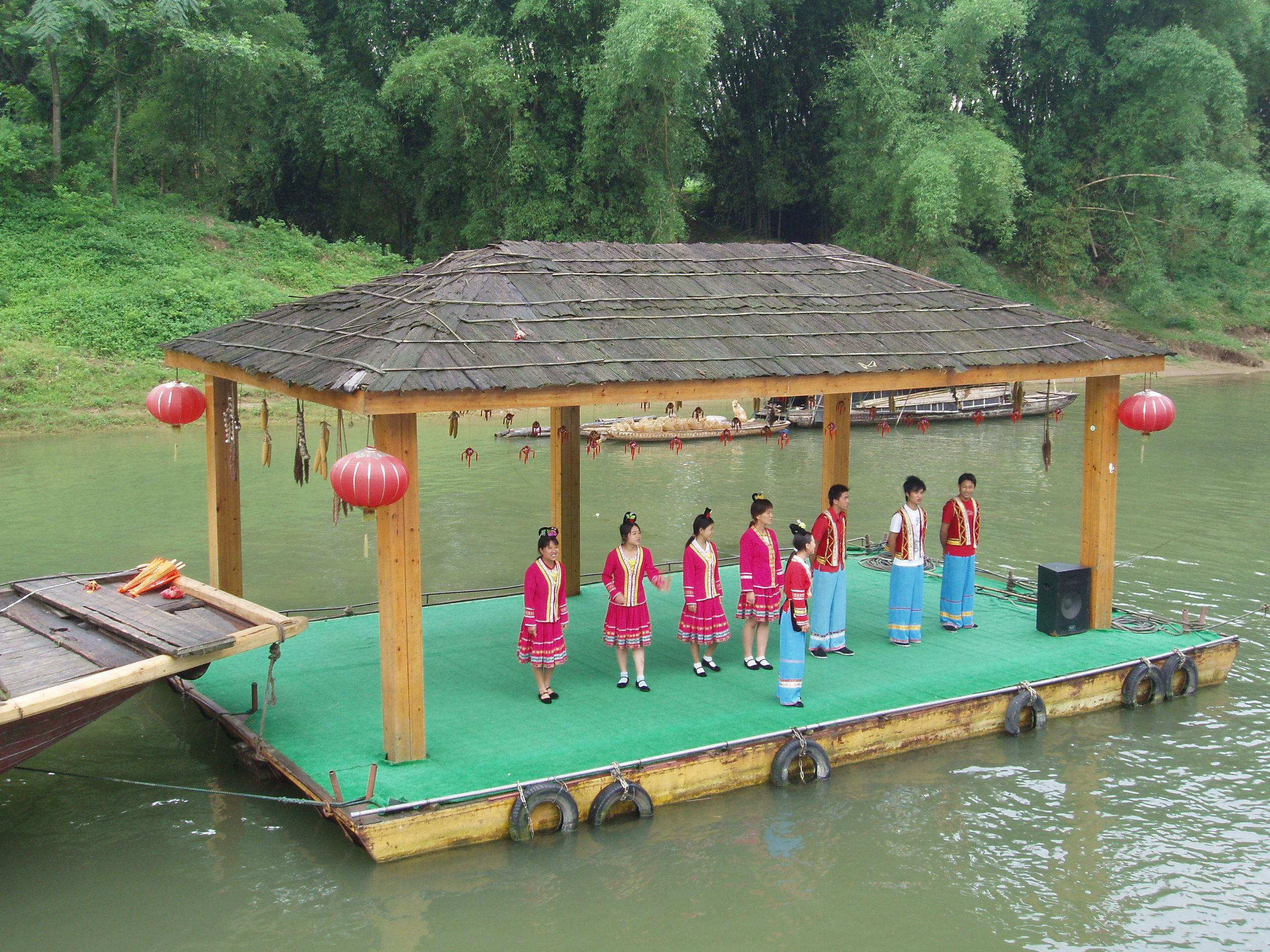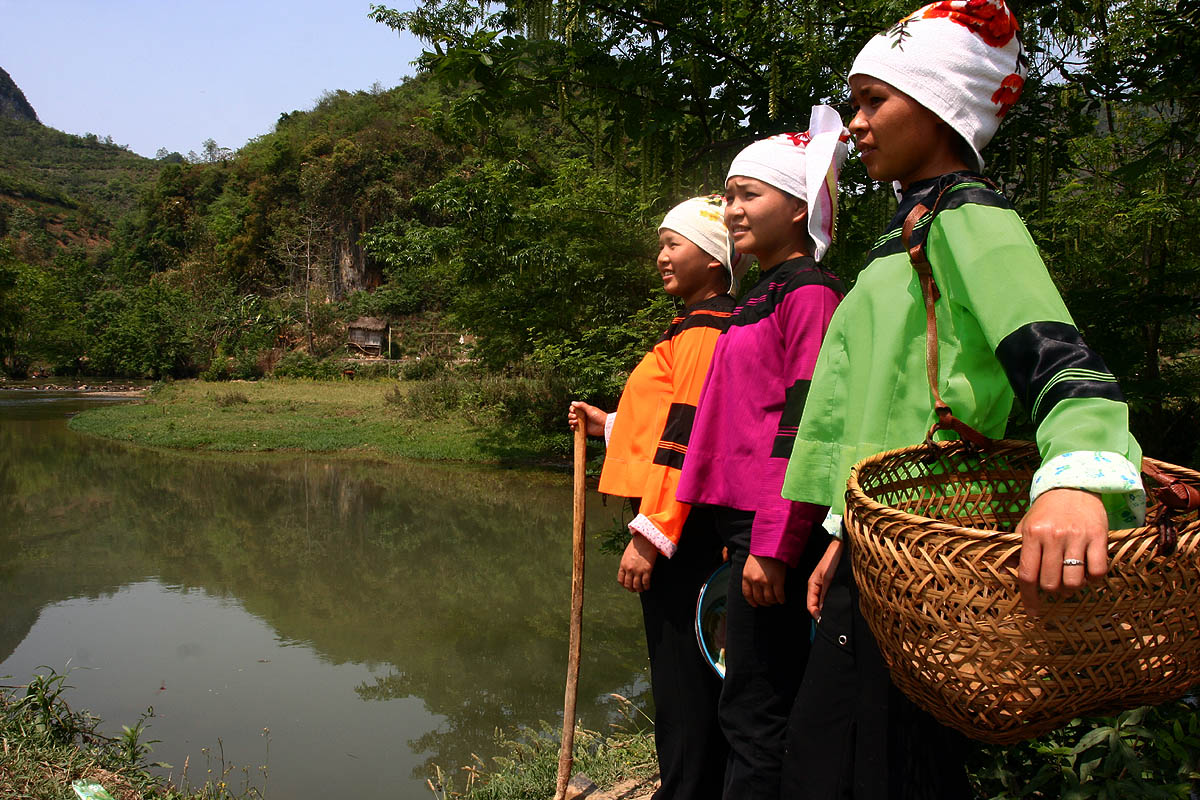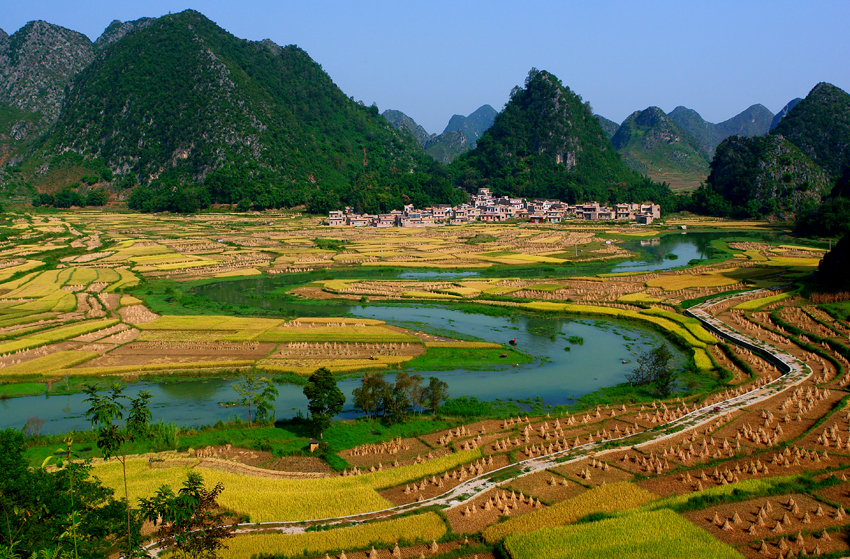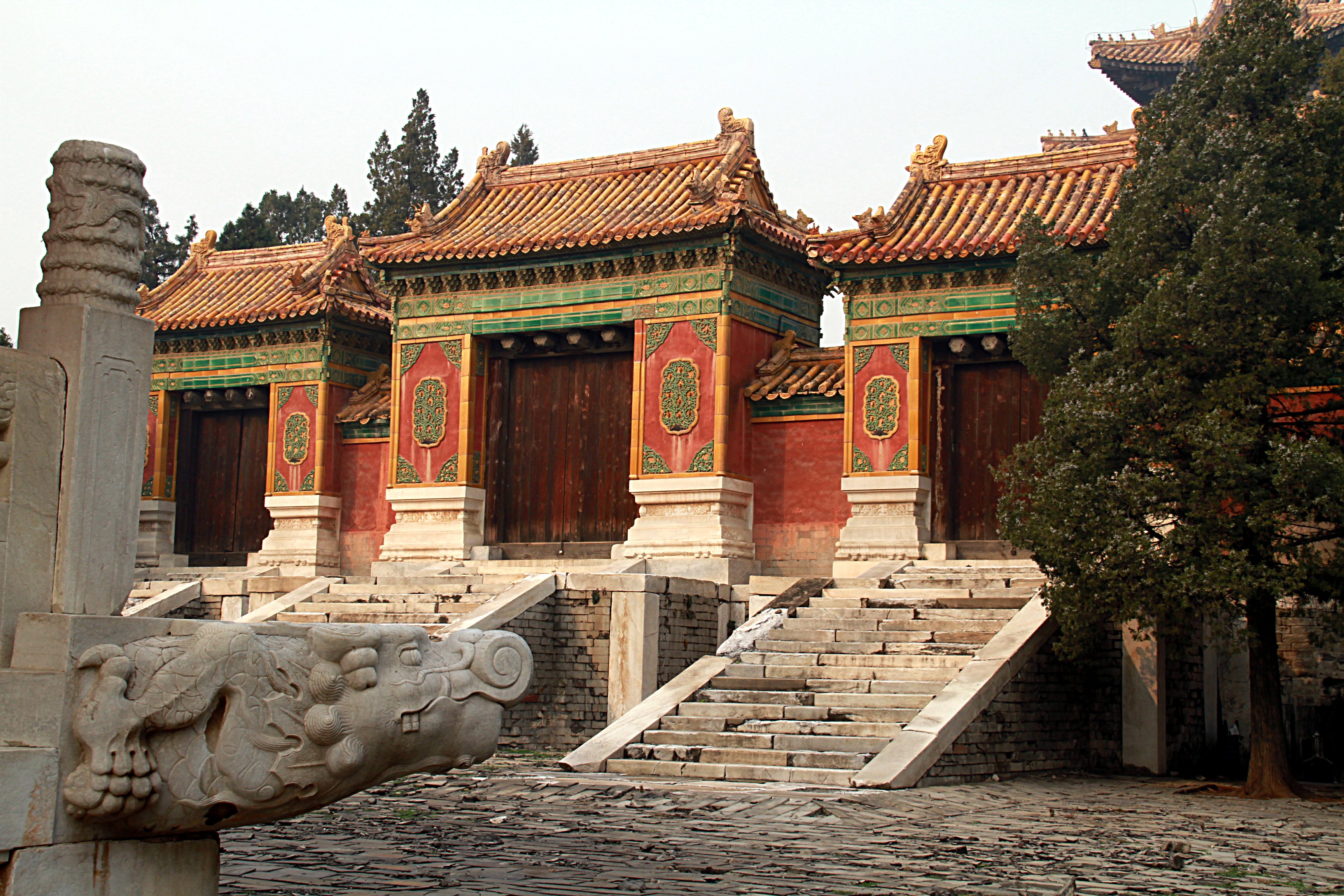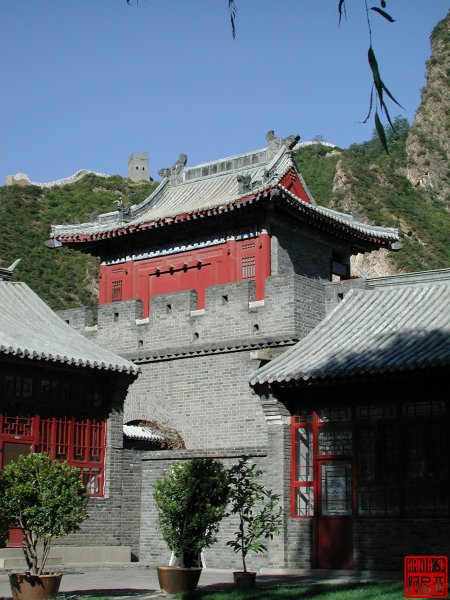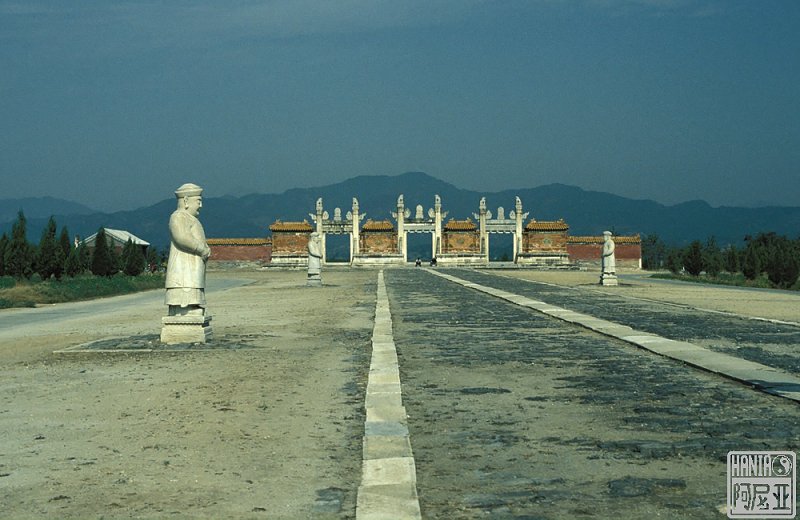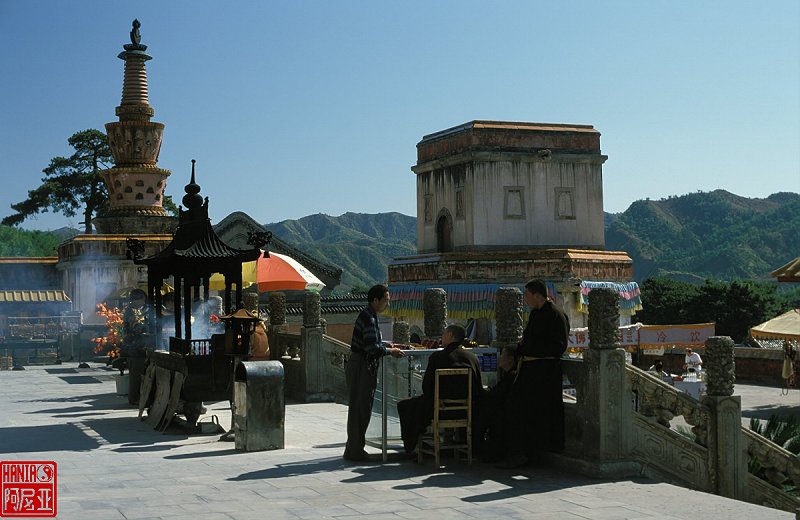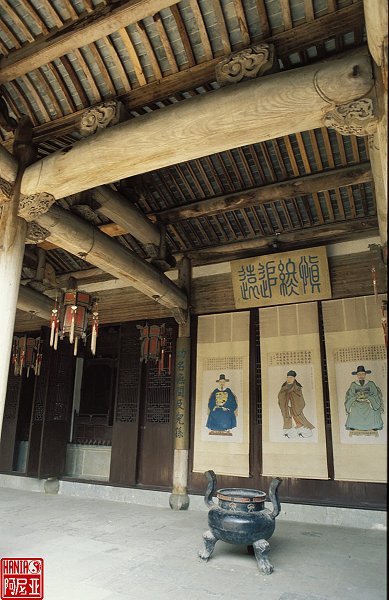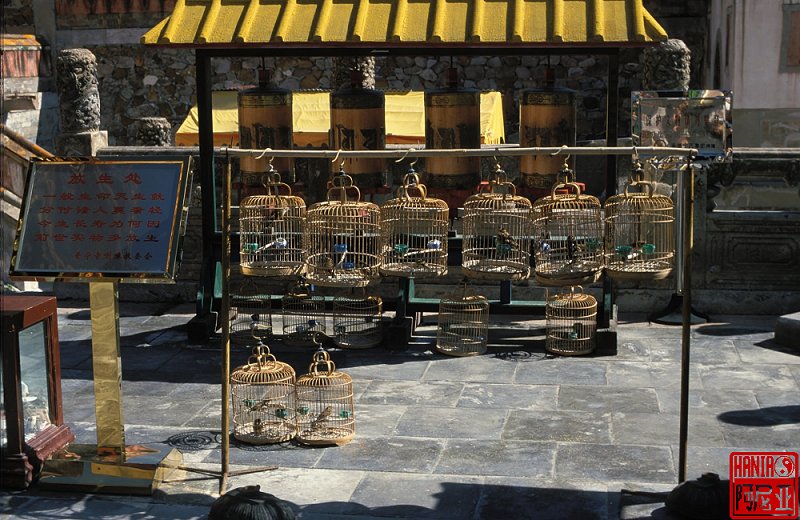How to install the app on iOS
Follow along with the video below to see how to install our site as a web app on your home screen.
Note: This feature may not be available in some browsers.
You are using an out of date browser. It may not display this or other websites correctly.
You should upgrade or use an alternative browser.
You should upgrade or use an alternative browser.
Pictures of Chinese people - 56 ethnic groups
- Thread starter ahfatzia
- Start date
Chinese-Dragon
RETIRED TTA

- Joined
- Jul 9, 2010
- Messages
- 33,932
- Reaction score
- 52
- Country
- Location
Zhuang woman:

So beautiful.

So beautiful.

ahfatzia
SENIOR MEMBER

- Joined
- Feb 22, 2012
- Messages
- 2,521
- Reaction score
- 0
The Manchus People 满族 is the 3rd largest ethnic group with a population of 10.5 millions (about 10%). They have presents in 31 provinces but majority live in China northeast and Beijing, with Liaoning has the largest concentration (about 50%). There are many Manchu autonomous counties and over 300 townships. The Manchus are descended from the Jurchen people who earlier established the Jin Dynasty (1115–1234) in China. All Manchus followed Prince Dorgon and Shunzhi Emporor to China proper when they took over the sovereignty and settled down since. They eventually adopted the Chinese cultures and language.
During the ROC rule many Manchus hid their identities that presented themselves as Hans and not until the PRC rule they felt confident enough to reveal their true ethnicity. They were originally Lamaists but later adopted Chinese religions as well and today most of the Manhu are indistinguishable from the Hans physically and culturally through intermarriages.
Official family portrait
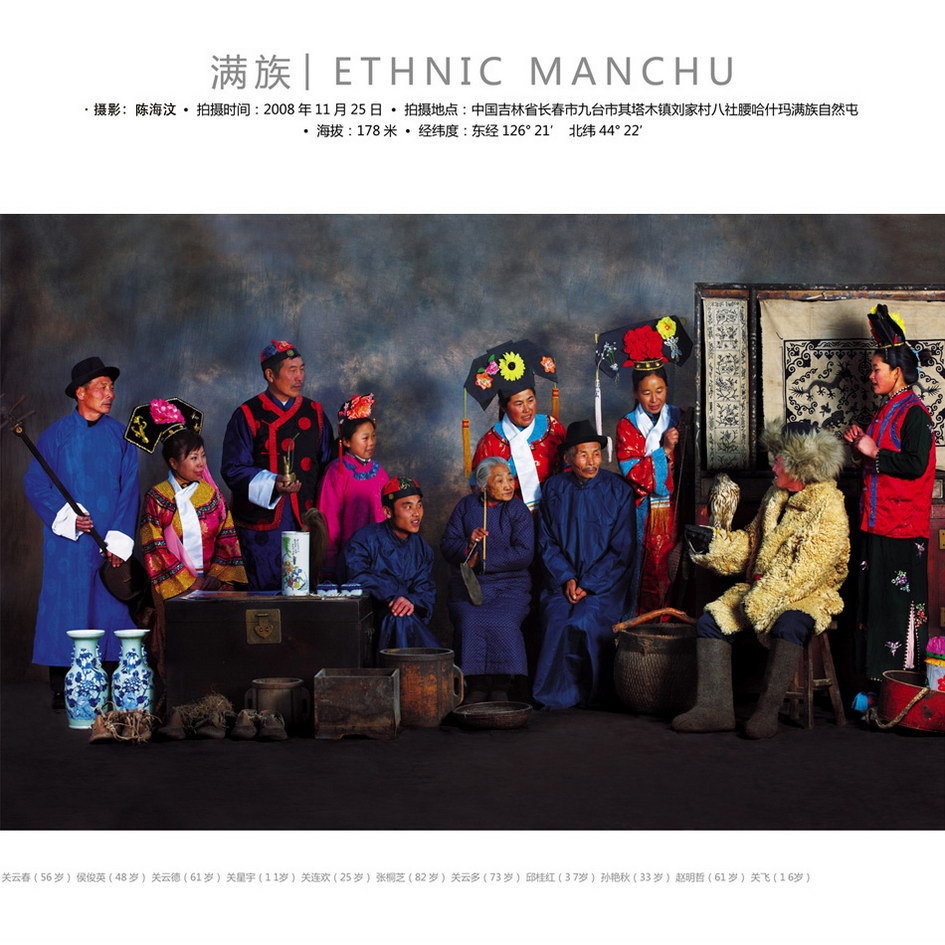
An old family portrait of a large Manchu family

Manchu were once Tungusic peoples

Shenyang 沈阳 Liaoning was once the capital of Manchu known as Fengtian Perfecture 奉天府 before they entered China proper and took over Beijing as the new capital of Manchurian Dynasty - also known as Qing Dynasty. Shenyang today

Shenyang's Mukden Palace, the original palace before they took over Forbidden City Palace. Qing emperors did spend some time here from time to time
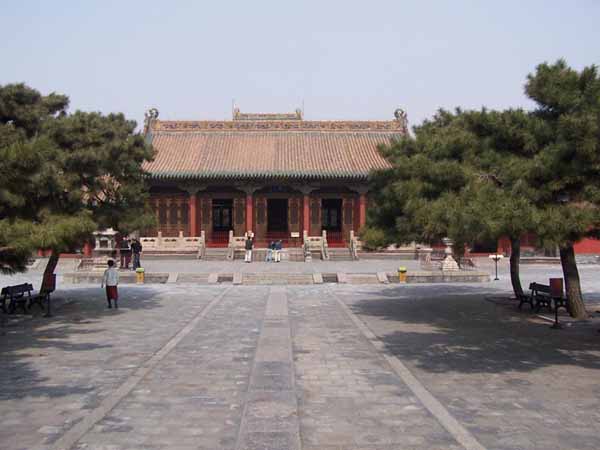
The Forbidden City, the palace for both the Ming and Qing Dynasties

The Throne of the Qing Empire
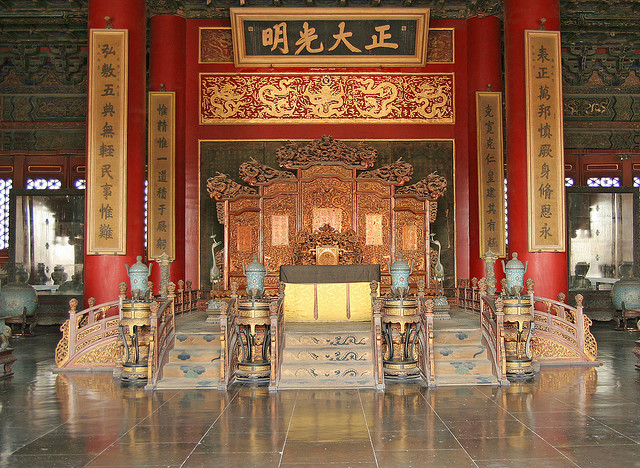
Manchu script

During the ROC rule many Manchus hid their identities that presented themselves as Hans and not until the PRC rule they felt confident enough to reveal their true ethnicity. They were originally Lamaists but later adopted Chinese religions as well and today most of the Manhu are indistinguishable from the Hans physically and culturally through intermarriages.
Official family portrait

An old family portrait of a large Manchu family

Manchu were once Tungusic peoples

Shenyang 沈阳 Liaoning was once the capital of Manchu known as Fengtian Perfecture 奉天府 before they entered China proper and took over Beijing as the new capital of Manchurian Dynasty - also known as Qing Dynasty. Shenyang today

Shenyang's Mukden Palace, the original palace before they took over Forbidden City Palace. Qing emperors did spend some time here from time to time

The Forbidden City, the palace for both the Ming and Qing Dynasties

The Throne of the Qing Empire

Manchu script

ahfatzia
SENIOR MEMBER

- Joined
- Feb 22, 2012
- Messages
- 2,521
- Reaction score
- 0
Manchus People 满族
Some notable contemporary Manchu:
Shu Qingchun 舒庆春 (2/1899- 8/66) a famous Chinese writer in early 1900s under the pen name Lao She 老舍

Lan Lan 郎朗 b6/82, Chinese concert pianist residing in New York, who has performed with leading orchestras in Europe, the United States and his native China
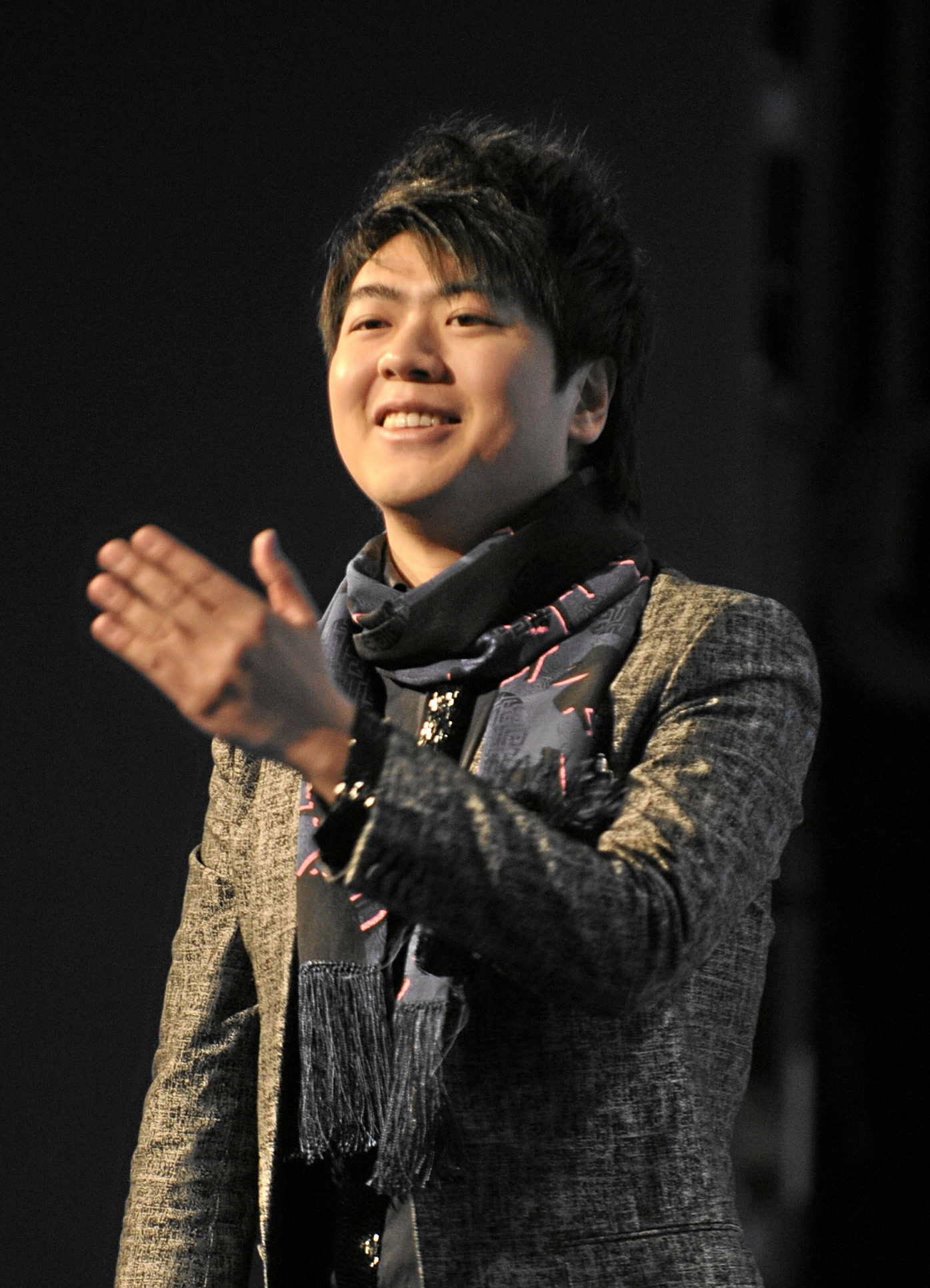
Kathy Chow Hoi-mei 周海媚 b 12/66 a fame HK actress

Rosamund Kwan 关芝琳 a HK born actress with a Manchu father

Dong Dawei 佟大為, a famous Chinese actor

Hu Jun 胡軍 , a famous Chinese actor
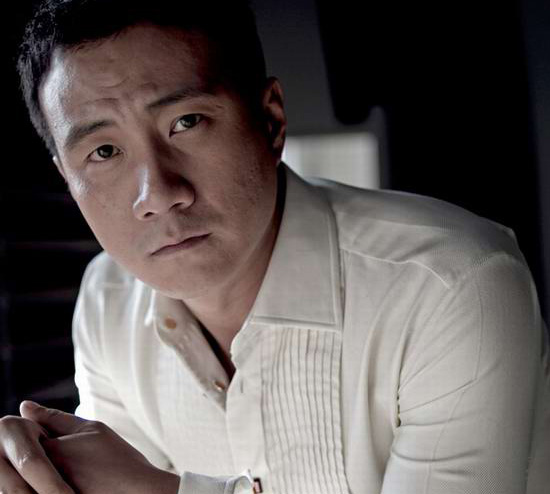
Grace Yang Tongshu 楊童舒 originally 楊柳, a Chinese actress

Na Ying 那英 -Singer/Actress
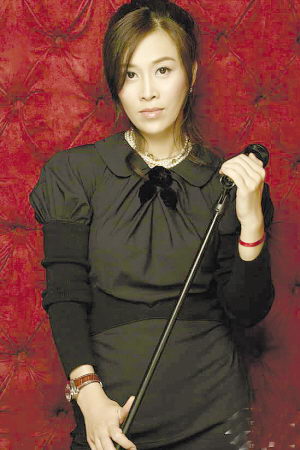
Some notable contemporary Manchu:
Shu Qingchun 舒庆春 (2/1899- 8/66) a famous Chinese writer in early 1900s under the pen name Lao She 老舍

Lan Lan 郎朗 b6/82, Chinese concert pianist residing in New York, who has performed with leading orchestras in Europe, the United States and his native China

Kathy Chow Hoi-mei 周海媚 b 12/66 a fame HK actress

Rosamund Kwan 关芝琳 a HK born actress with a Manchu father

Dong Dawei 佟大為, a famous Chinese actor

Hu Jun 胡軍 , a famous Chinese actor

Grace Yang Tongshu 楊童舒 originally 楊柳, a Chinese actress

Na Ying 那英 -Singer/Actress

ahfatzia
SENIOR MEMBER

- Joined
- Feb 22, 2012
- Messages
- 2,521
- Reaction score
- 0
Manchus People 满族
The Eastern Qing Tombs 清東陵 are an imperial mausoleum complex of the Qing Dynasty located in Zunhua, 125 kilometers northeast of Beijing. They are the largest, most complete, and best preserved extant mausoleum complex in China. Altogether, 5 emperors (Shunzhi, Kangxi, Qianlong, Xianfeng, and Tongzhi), 15 empresses (including Cixi who defacto ruled China from 1861- 1908 behind the curtain), 136 imperial concubines, 3 princes, and 2 princesses of the Qing Dynasty were buried here. Surrounded by Changrui Mountain, Jinxing Mountain, Huanghua Mountain (where Huangyaguan 黄崖关 Great wall is located), and Yingfei Daoyang Mountain, the tomb complex stretches over a total area of 80 km2.
A map of Eastern Qing Tombs

An aerial view

Front gate
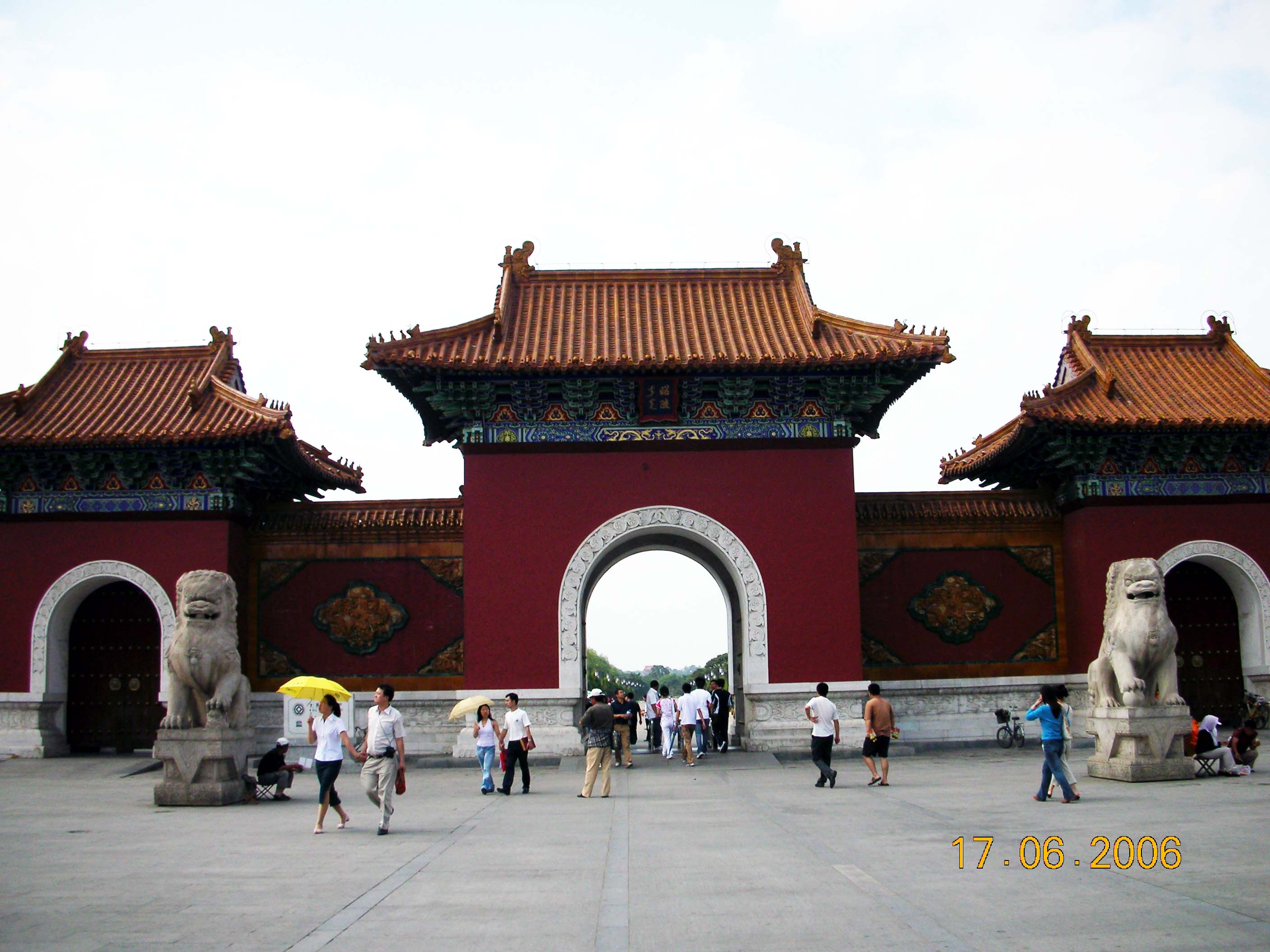
Front entrance
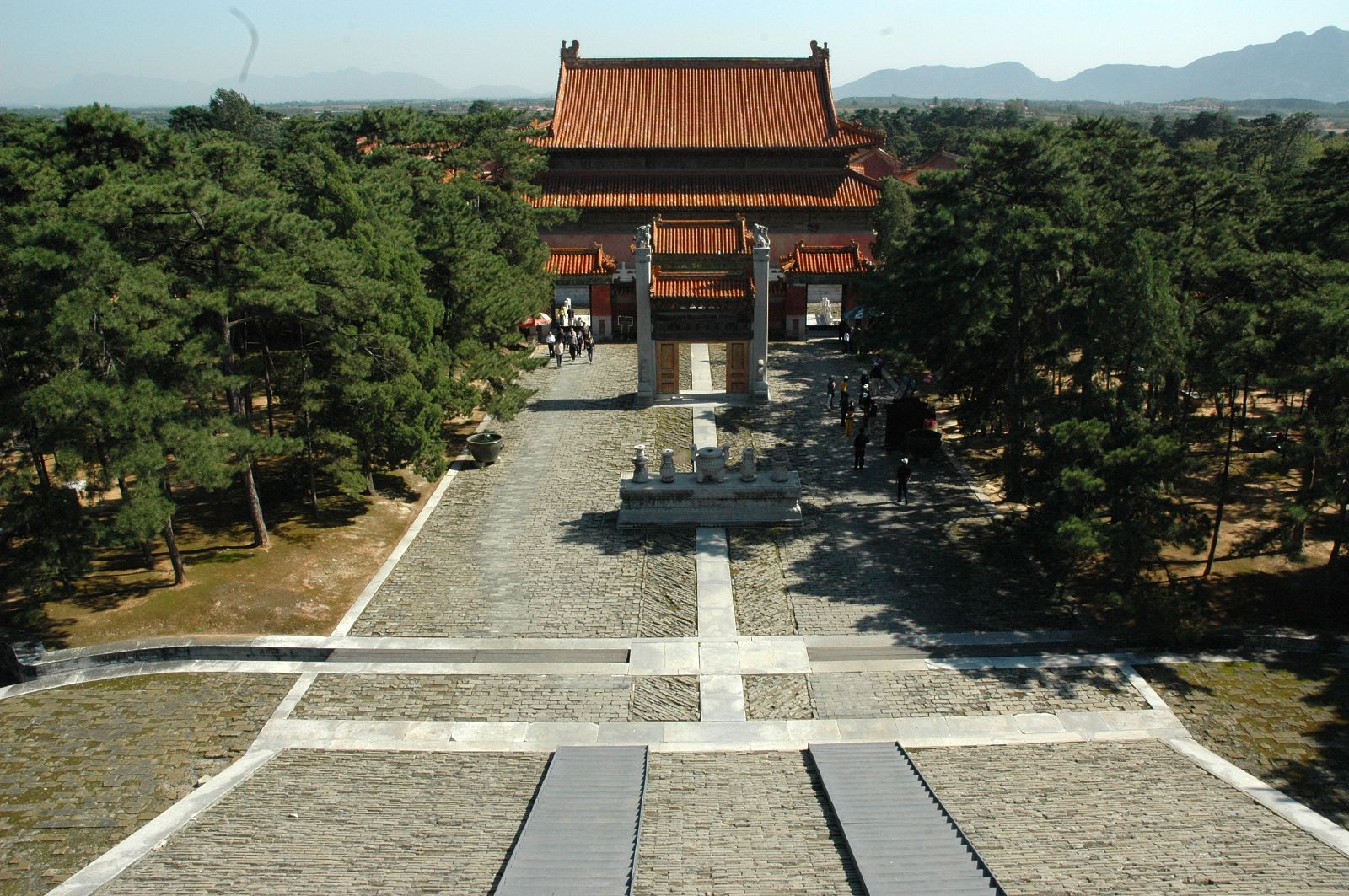
Cixi's memorial tower

Cixi's burial chamber
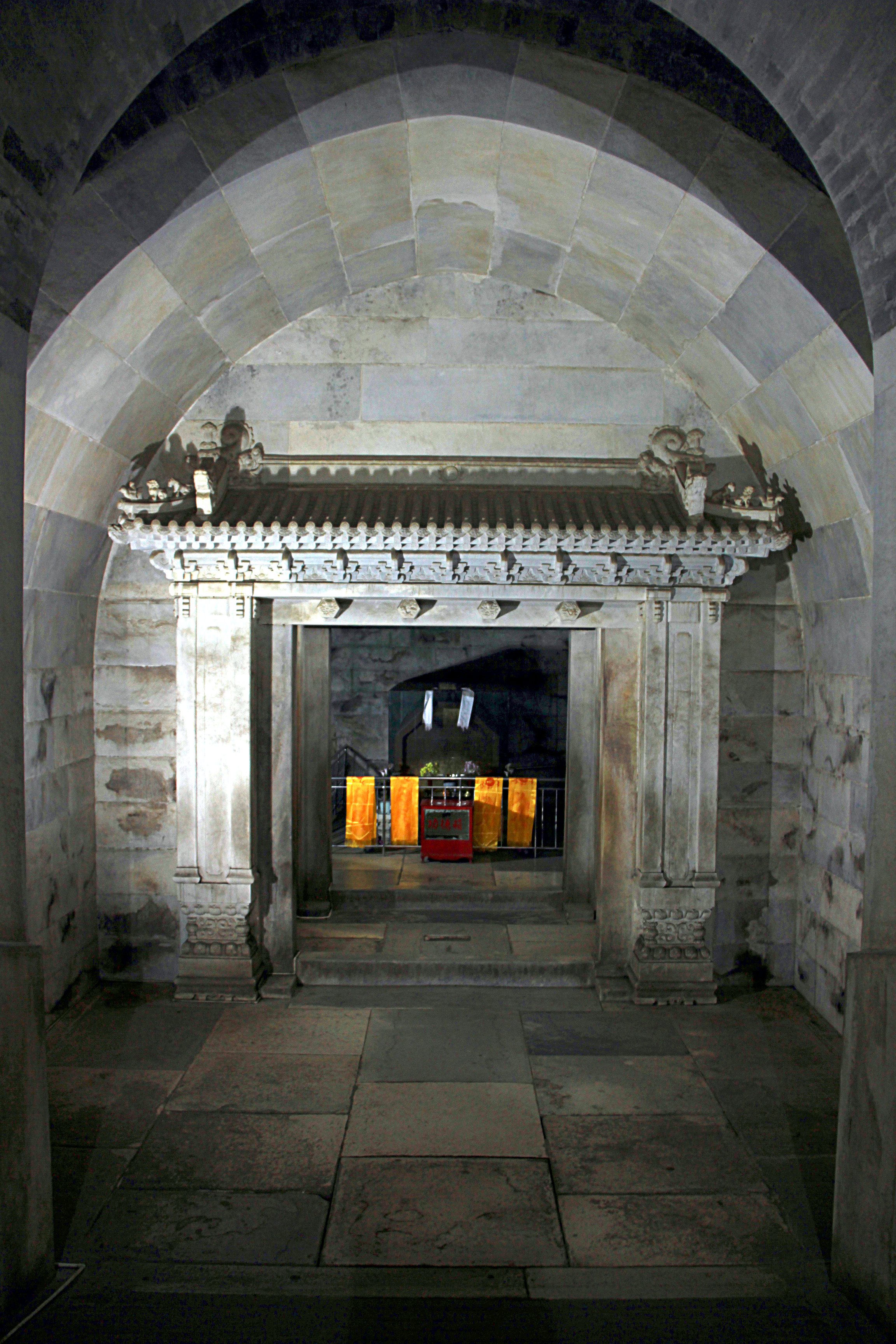
Yuling-Tomb of Qing-Emperor Qianlong

Casket of ***** Emperor (someone?)

The Eastern Qing Tombs 清東陵 are an imperial mausoleum complex of the Qing Dynasty located in Zunhua, 125 kilometers northeast of Beijing. They are the largest, most complete, and best preserved extant mausoleum complex in China. Altogether, 5 emperors (Shunzhi, Kangxi, Qianlong, Xianfeng, and Tongzhi), 15 empresses (including Cixi who defacto ruled China from 1861- 1908 behind the curtain), 136 imperial concubines, 3 princes, and 2 princesses of the Qing Dynasty were buried here. Surrounded by Changrui Mountain, Jinxing Mountain, Huanghua Mountain (where Huangyaguan 黄崖关 Great wall is located), and Yingfei Daoyang Mountain, the tomb complex stretches over a total area of 80 km2.
A map of Eastern Qing Tombs

An aerial view

Front gate

Front entrance

Cixi's memorial tower

Cixi's burial chamber

Yuling-Tomb of Qing-Emperor Qianlong
Casket of ***** Emperor (someone?)
ahfatzia
SENIOR MEMBER

- Joined
- Feb 22, 2012
- Messages
- 2,521
- Reaction score
- 0
Manchus People 满族
The Manchu have been in China proper since 1644 and in northeastern China at least twice that long, given the small number of them in comparison and their willingness to assimilate with the Hans, their culture and their ways of live are all disappeared. Even for movie sets or for some ceremonial affairs, they probably have to rely on old pictures to make their traditional dresses.

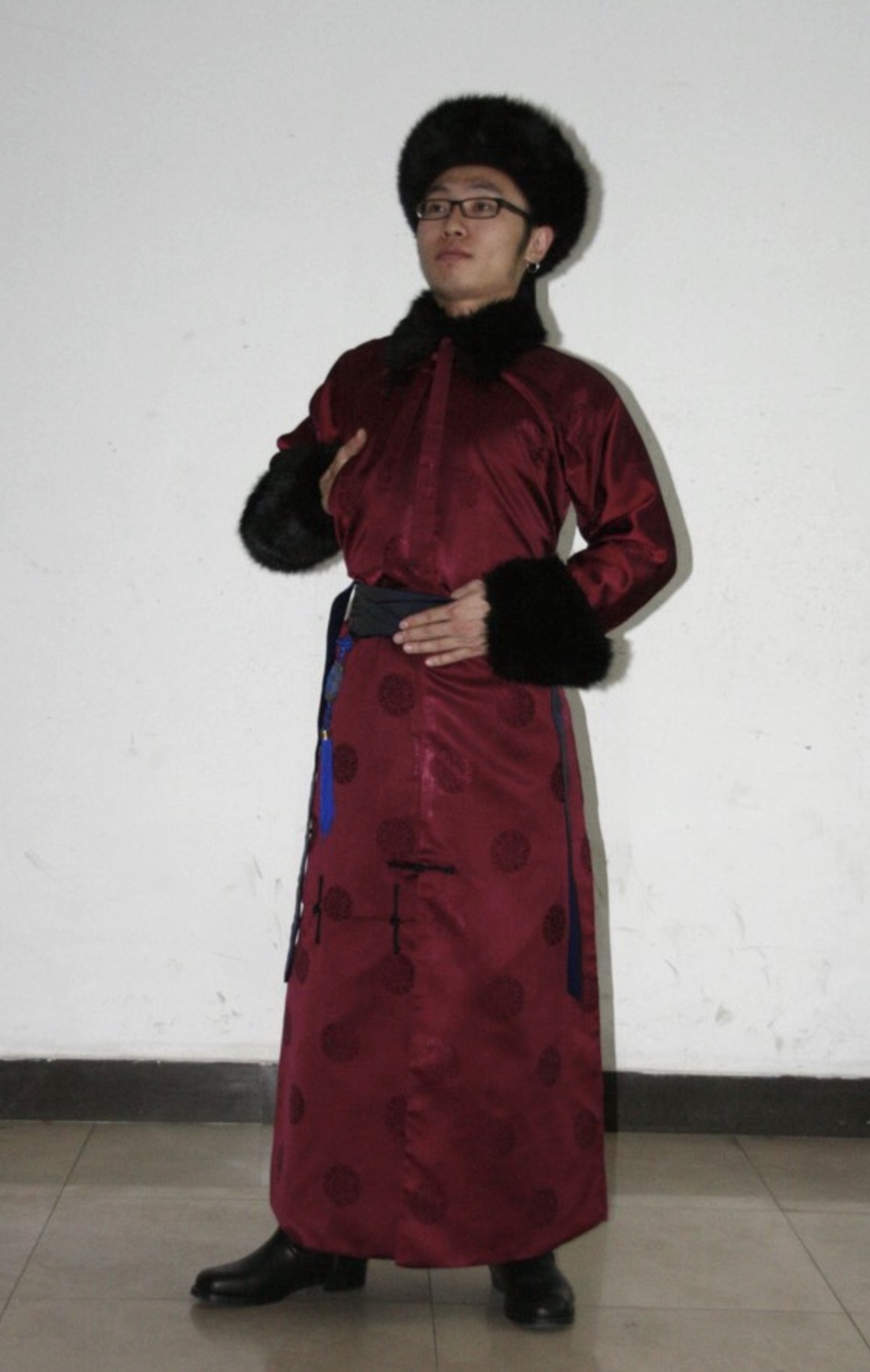
Formal hair style

Traditional women's dress
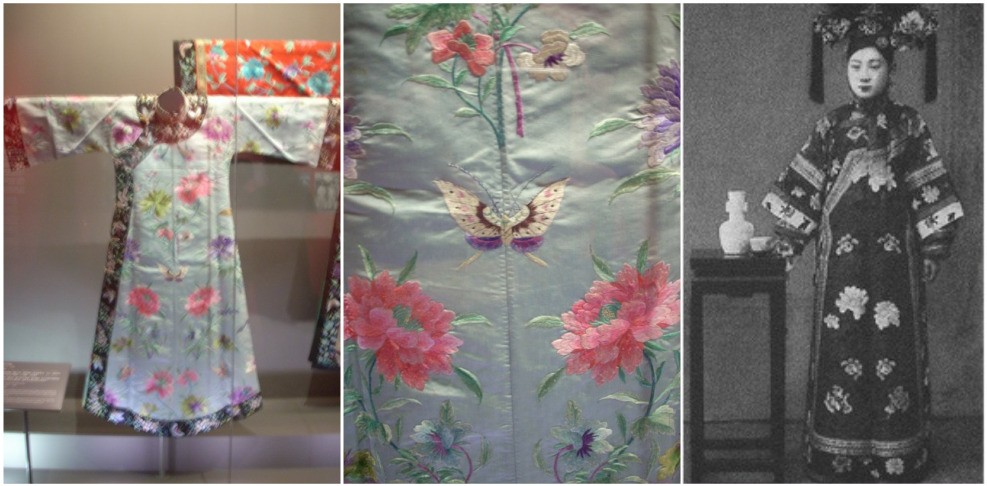
This couple's Qi Pao 旗袍 & Ma Gua 马褂 derived from Manchu's styles


Elegance, stylish and classy

Qi Pao 旗袍, Qi means the Manchurian ruling 8 Banners, were such a big hit in Hong Kong after WWII practically (thanks in part to Suzy Wong too) every girl must had a few in her wardrobe.

The Manchu have been in China proper since 1644 and in northeastern China at least twice that long, given the small number of them in comparison and their willingness to assimilate with the Hans, their culture and their ways of live are all disappeared. Even for movie sets or for some ceremonial affairs, they probably have to rely on old pictures to make their traditional dresses.


Formal hair style

Traditional women's dress

This couple's Qi Pao 旗袍 & Ma Gua 马褂 derived from Manchu's styles


Elegance, stylish and classy

Qi Pao 旗袍, Qi means the Manchurian ruling 8 Banners, were such a big hit in Hong Kong after WWII practically (thanks in part to Suzy Wong too) every girl must had a few in her wardrobe.

ahfatzia
SENIOR MEMBER

- Joined
- Feb 22, 2012
- Messages
- 2,521
- Reaction score
- 0
Manchus People 满族
In 1911 Yuan Shikai Pressuring Manchu Emperor Into Abdication
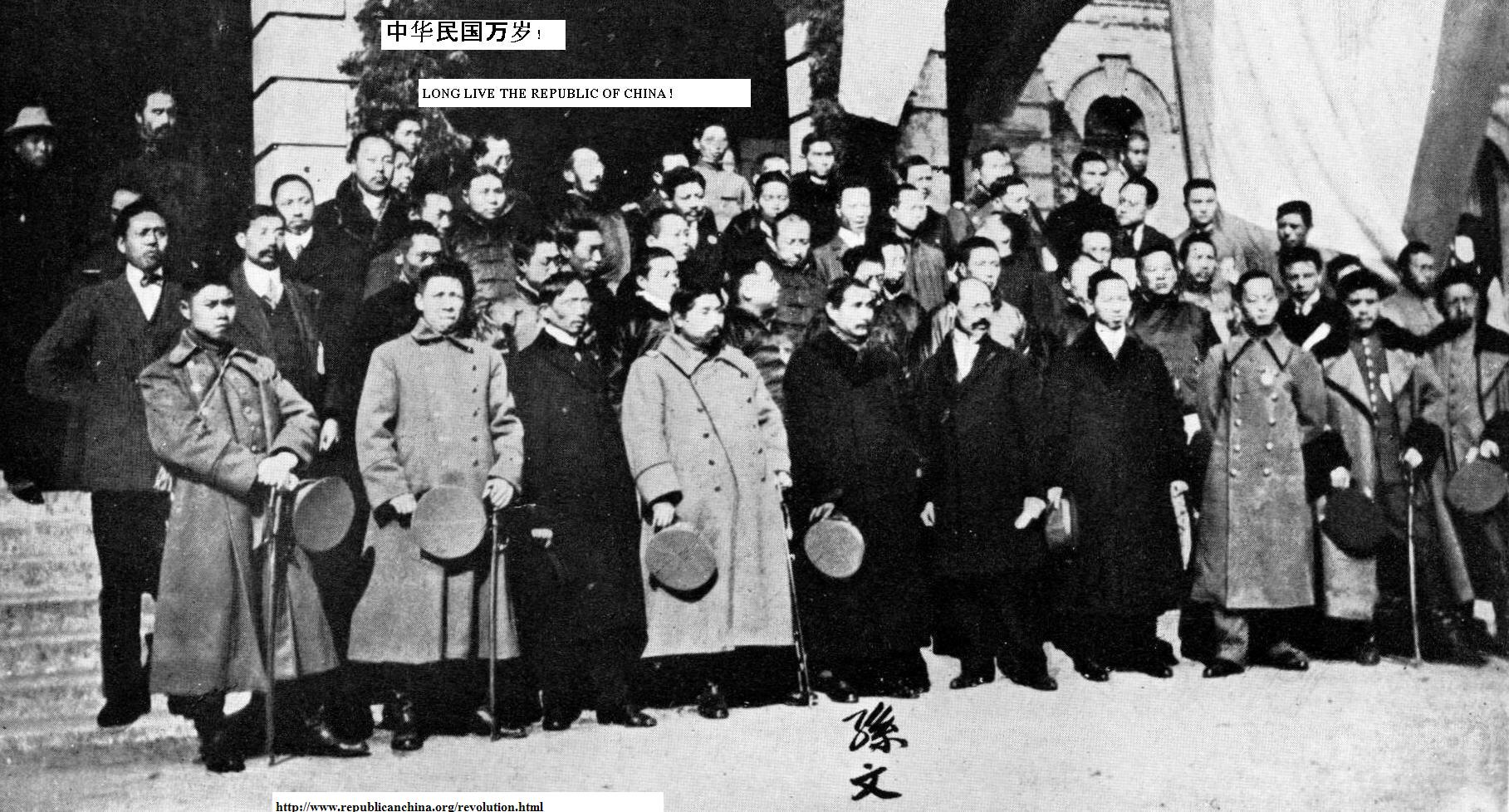
Puyi 溥儀 (1906- 1967), the last Emperor in China, as well as the first and the last Emperor of the ill fated and Japanese backed Manchukuo 满洲国 with headquater in Changchun, Jilin.

The backside of the entrance gate to the Museum of the Imperial Palace of the Manchu State, Changchun, Jilin where Puyi once presided

The main palace
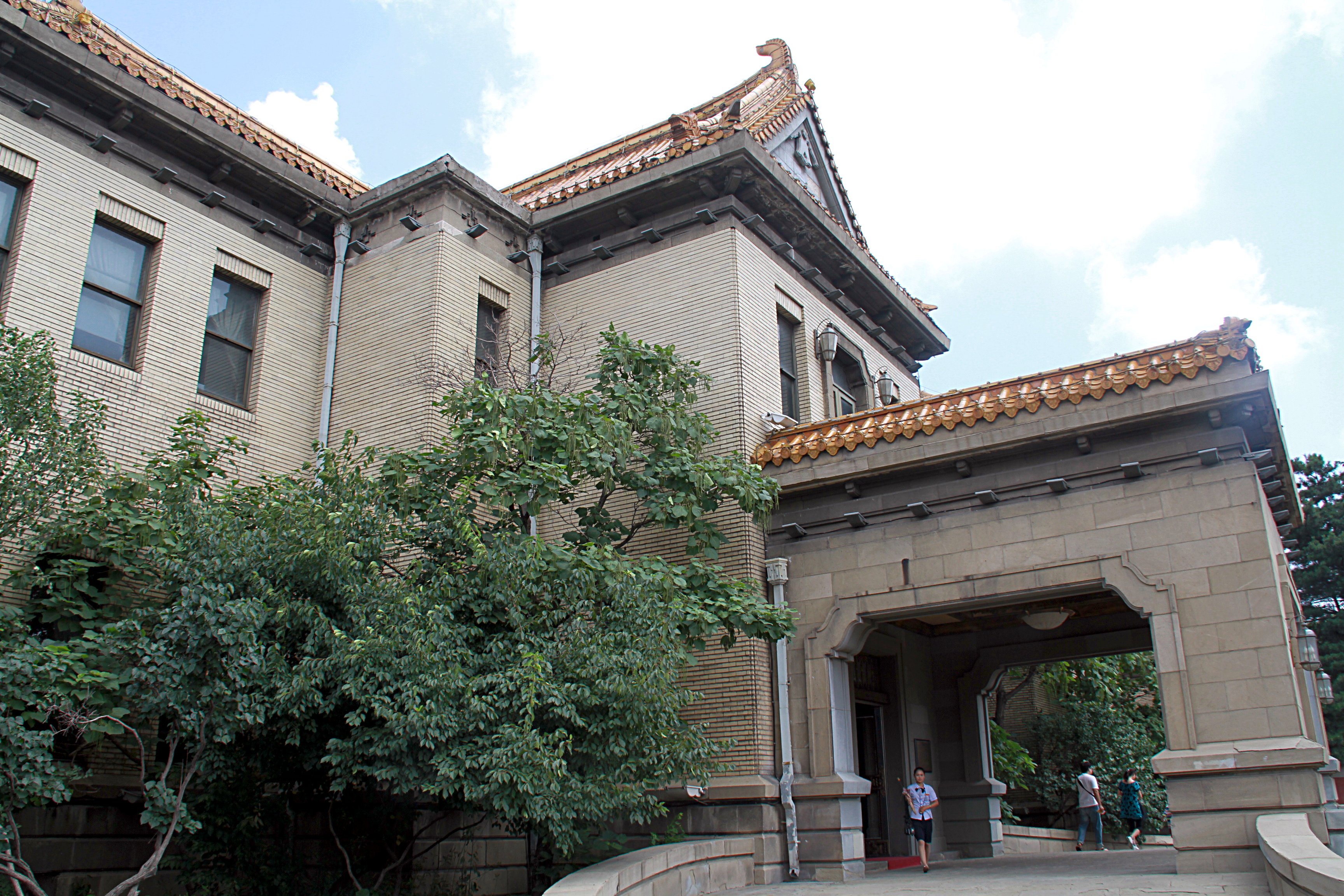
The formal dinner table
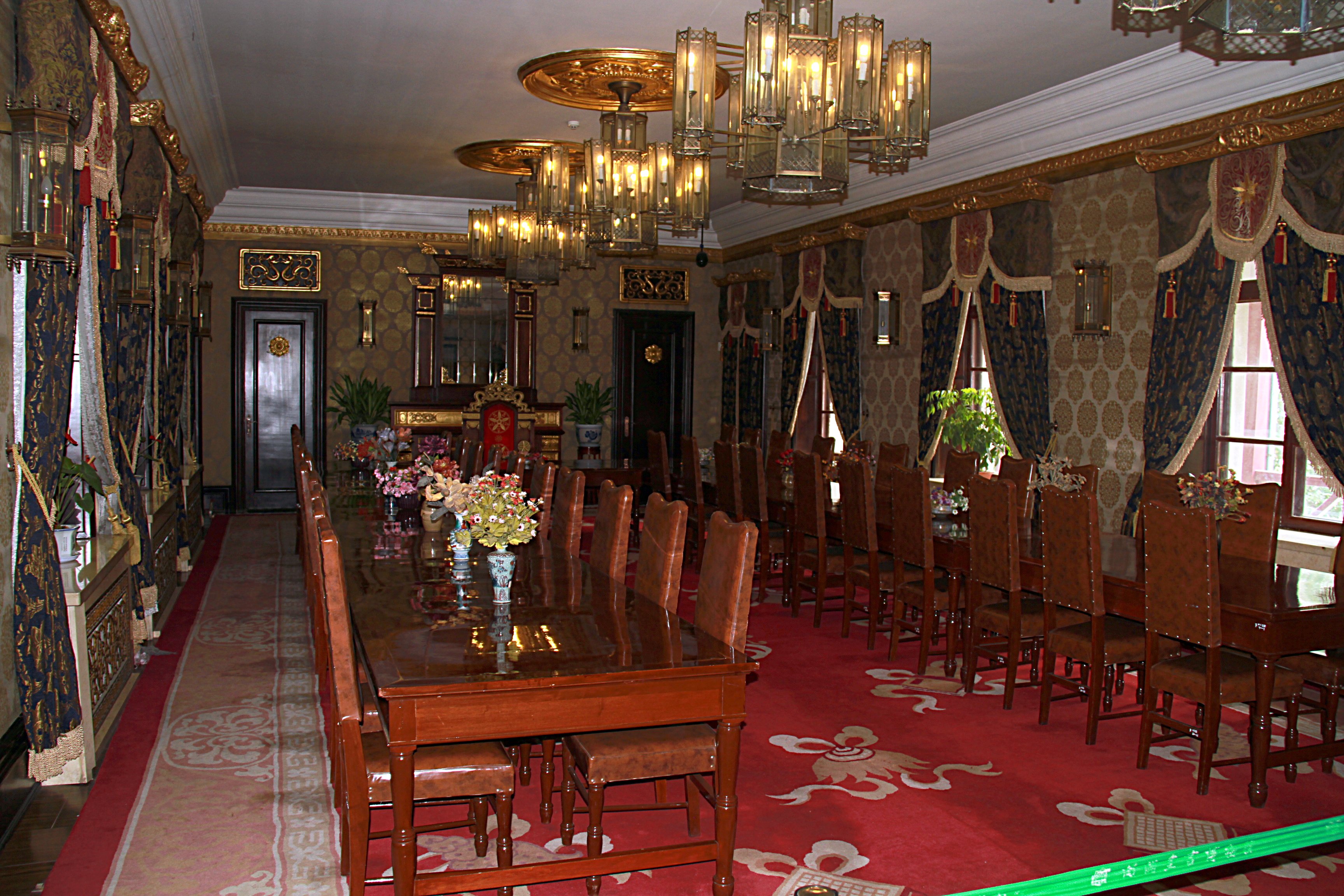
A wax museum of the sitting room. Puyi presumes to be the gentlemen sitting and directed the palace etiquette to his concubine consort Noble Lady Fu 福貴人 Li Yuqin 李玉琴 (1928- 2001)

Puyi and Li Yuqin

Li Yuqin sued Puyi for divorce after the war and remarried later

In 1911 Yuan Shikai Pressuring Manchu Emperor Into Abdication

Puyi 溥儀 (1906- 1967), the last Emperor in China, as well as the first and the last Emperor of the ill fated and Japanese backed Manchukuo 满洲国 with headquater in Changchun, Jilin.

The backside of the entrance gate to the Museum of the Imperial Palace of the Manchu State, Changchun, Jilin where Puyi once presided

The main palace

The formal dinner table

A wax museum of the sitting room. Puyi presumes to be the gentlemen sitting and directed the palace etiquette to his concubine consort Noble Lady Fu 福貴人 Li Yuqin 李玉琴 (1928- 2001)

Puyi and Li Yuqin

Li Yuqin sued Puyi for divorce after the war and remarried later

ahfatzia
SENIOR MEMBER

- Joined
- Feb 22, 2012
- Messages
- 2,521
- Reaction score
- 0
Manchus People 满族
There are about 12,000 Manchus in Taiwan and this is one of their community center

An annual Manchu ethnic gathering in northeastern China today

A Manchurian marriage

An onstage duet performance is a popular Manchurian culture

An ethnic Manchu street in Beijing

A Manchu restaurant

A Manchu store

Manchu falconers
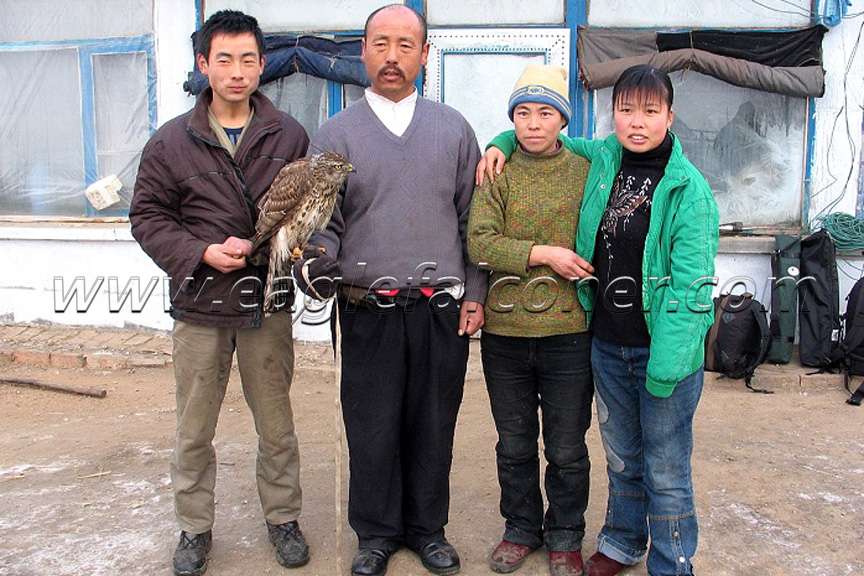
There are about 12,000 Manchus in Taiwan and this is one of their community center

An annual Manchu ethnic gathering in northeastern China today

A Manchurian marriage

An onstage duet performance is a popular Manchurian culture

An ethnic Manchu street in Beijing

A Manchu restaurant

A Manchu store

Manchu falconers

Rusty
ELITE MEMBER

- Joined
- Jun 19, 2011
- Messages
- 8,563
- Reaction score
- 3
- Country
- Location
The Manchus People 满族 is the 3rd largest ethnic group with a population of 10.5 millions (about 10%). They have presents in 31 provinces but majority live in China northeast and Beijing, with Liaoning has the largest concentration (about 50%). There are many Manchu autonomous counties and over 300 townships. The Manchus are descended from the Jurchen people who earlier established the Jin Dynasty (1115–1234) in China. All Manchus followed Prince Dorgon and Shunzhi Emporor to China proper when they took over the sovereignty and settled down since. They eventually adopted the Chinese cultures and language.
During the ROC rule many Manchus hid their identities that presented themselves as Hans and not until the PRC rule they felt confident enough to reveal their true ethnicity. They were originally Lamaists but later adopted Chinese religions as well and today most of the Manhu are indistinguishable from the Hans physically and culturally through intermarriages.
Official family portrait

An old family portrait of a large Manchu family

Manchu were once Tungusic peoples

Shenyang 沈阳 Liaoning was once the capital of Manchu known as Fengtian Perfecture 奉天府 before they entered China proper and took over Beijing as the new capital of Manchurian Dynasty - also known as Qing Dynasty. Shenyang today

Shenyang's Mukden Palace, the original palace before they took over Forbidden City Palace. Qing emperors did spend some time here from time to time

The Forbidden City, the palace for both the Ming and Qing Dynasties

The Throne of the Qing Empire

Manchu script

Manchu script looks awesome, almost like Arabic but from top to bottom.
ahfatzia
SENIOR MEMBER

- Joined
- Feb 22, 2012
- Messages
- 2,521
- Reaction score
- 0
Hui people 回族 has a population of about 10 millions (9% of the ethnic population minus the Hans), They are found throughout the country, though are concentrated mainly in the provinces of Ningxia, Qinghai, and Gansu and the majority of whom are Chinese-speaking practitioners of Islam, but some practice other religions as well. Although many Hui people are ethnically and culturally similar to Han Chinese, the group has retained some Persian and Central Asian features, but speak and write primary Chinese. Almost all Hui use Chinese names and study Confucius teachings.
The Hui people are of varied ancestry, and many are direct descendants of Silk Road travelers. Their ancestors include Central Asian, Arabs, and Persian who married Han Chinese. In the subsequent centuries, by gradually mixed with Mongols and Han Chinese, and the Hui people were formed. Chinese Hui are probably one of the most moderated and tolerated of all Muslims when it comes to religion. The current government of China defines a Hui as a Chinese speaker with foreign Muslim ancestry. Practicing the Islamic religion is not required.
Most Hui adopt Ha surnames in the forms of Ma for Mohammed, Ha for Hasan or Hu for Hussein for examples.
Official family portrait
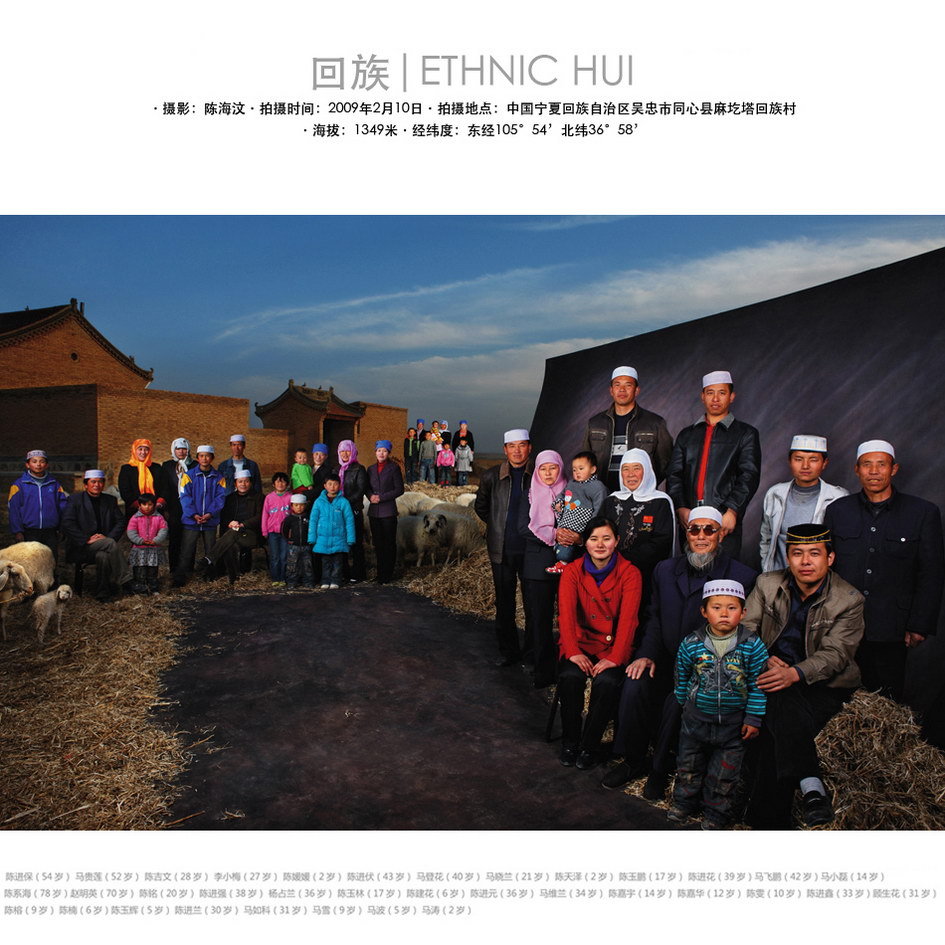
the distribution of Hui through out China (notice the green on the extreme left represents the Uyghurs in Xinjiang)

A 5 RMB note, a Hui man and a Tibetan woman

Hui traditional costume

Home clothes

Work clothes

Modern casual (although many dress just like any other Chinese)

Formal wears, like for traditional weddings and banquets

The Hui people are of varied ancestry, and many are direct descendants of Silk Road travelers. Their ancestors include Central Asian, Arabs, and Persian who married Han Chinese. In the subsequent centuries, by gradually mixed with Mongols and Han Chinese, and the Hui people were formed. Chinese Hui are probably one of the most moderated and tolerated of all Muslims when it comes to religion. The current government of China defines a Hui as a Chinese speaker with foreign Muslim ancestry. Practicing the Islamic religion is not required.
Most Hui adopt Ha surnames in the forms of Ma for Mohammed, Ha for Hasan or Hu for Hussein for examples.
Official family portrait

the distribution of Hui through out China (notice the green on the extreme left represents the Uyghurs in Xinjiang)

A 5 RMB note, a Hui man and a Tibetan woman

Hui traditional costume

Home clothes

Work clothes

Modern casual (although many dress just like any other Chinese)

Formal wears, like for traditional weddings and banquets

ahfatzia
SENIOR MEMBER

- Joined
- Feb 22, 2012
- Messages
- 2,521
- Reaction score
- 0
Hui people 回族
Hui Muslim people gather in prayer to celebrate Eid-al-Fitr on August 31 at Niujie Mosque in Xicheng District, Beijing.
The Niujie Mosque 牛街清真寺 is the oldest mosque in Beijing, China. It was built in 996 and completely rebuilt under the Kangxi Emperor (1622-1722).

The Mosque

Courts

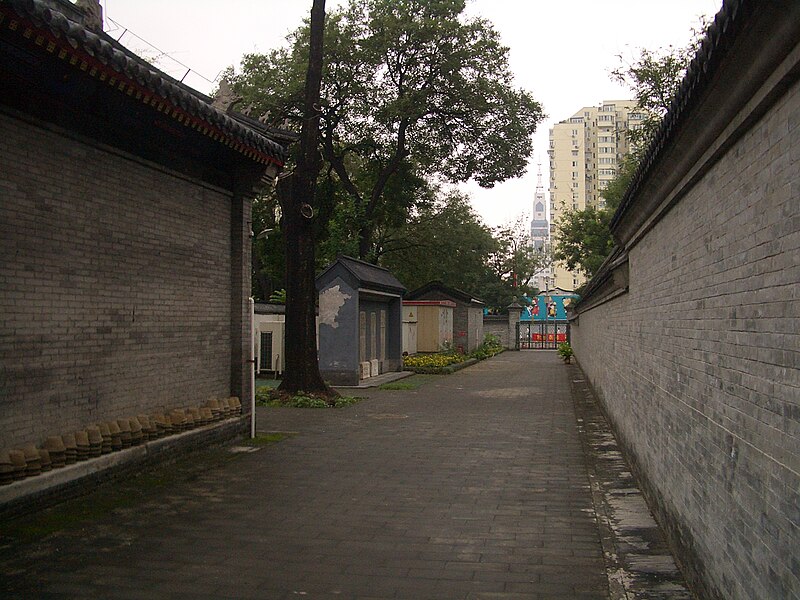
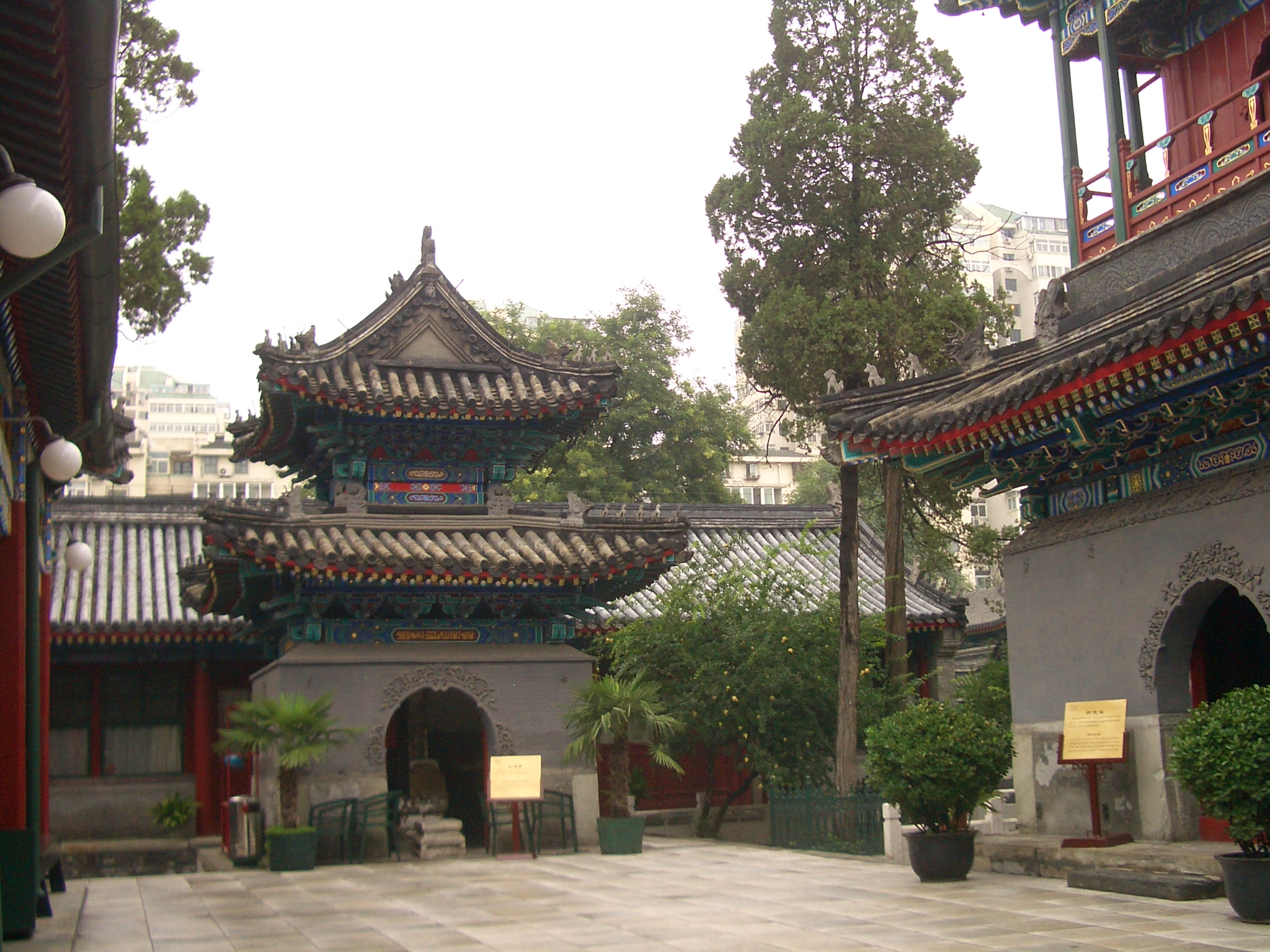

The main hall

Tombs in the Mosque
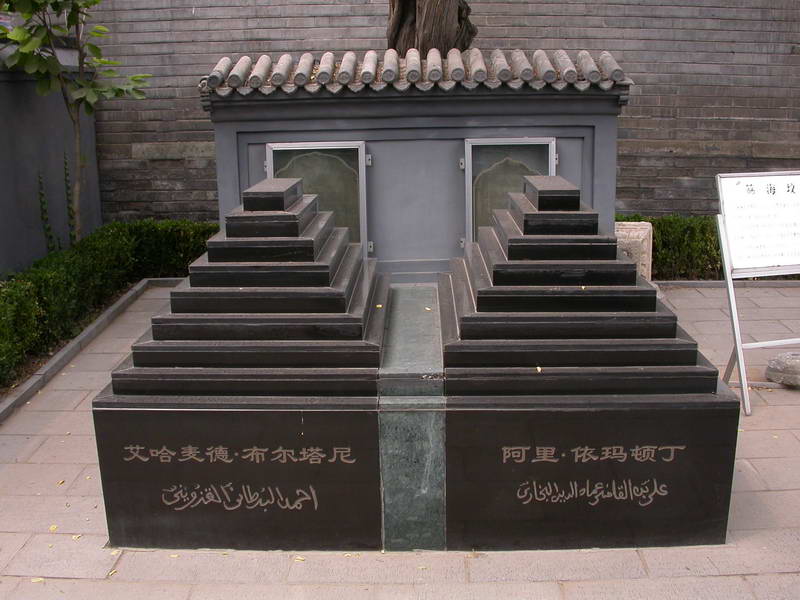
Hui Muslim people gather in prayer to celebrate Eid-al-Fitr on August 31 at Niujie Mosque in Xicheng District, Beijing.
The Niujie Mosque 牛街清真寺 is the oldest mosque in Beijing, China. It was built in 996 and completely rebuilt under the Kangxi Emperor (1622-1722).

The Mosque

Courts


The main hall

Tombs in the Mosque

ahfatzia
SENIOR MEMBER

- Joined
- Feb 22, 2012
- Messages
- 2,521
- Reaction score
- 0
Hui people 回族
Zheng He 鄭和 (13711433) was a Muslim Hui-Chinese court eunuch of the Ming dynasty, mariner, explorer, diplomat and fleet admiral, who commanded voyages to Southeast Asia, South Asia, the Middle East, Somalia and the Swahili coast, collectively referred to as the "Voyages of Zheng He" from 1405 to 1433.
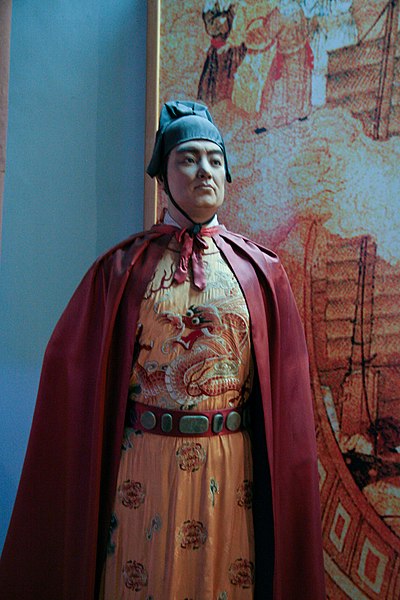
Zheng-He-7th-expedition-map
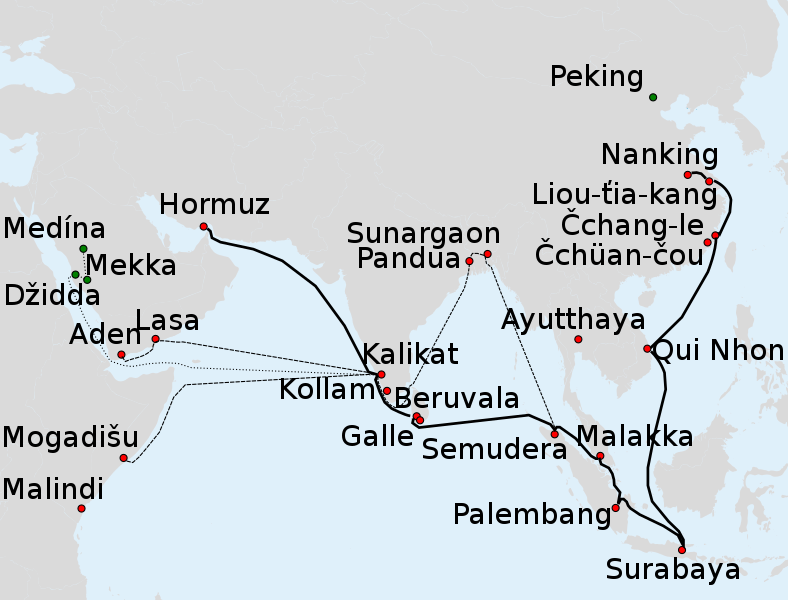
A display at the Ibn Battuta Mall in Dubai, UAE, compares the size of ships used by Zheng He and by Christopher Columbus.

Zhenghe's tomb in Nanjing
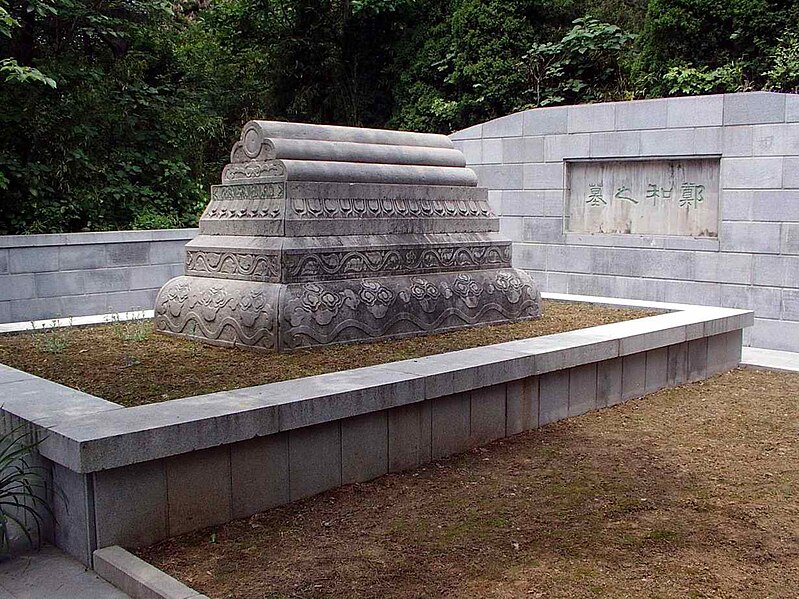
Hu Songshan (18801956)虎嵩山 imam of the Yihewani and a nationalist

Ma Fuxiang 马福祥 (1876-1932) Qing general, military governor for various provinces later
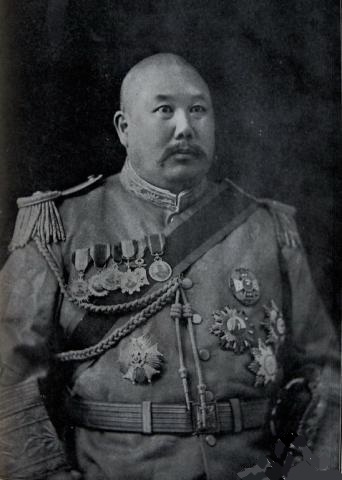
Ma Bufang 马步芳 (19031975) one of the Ma clique during KMT era who ruled Qinghai
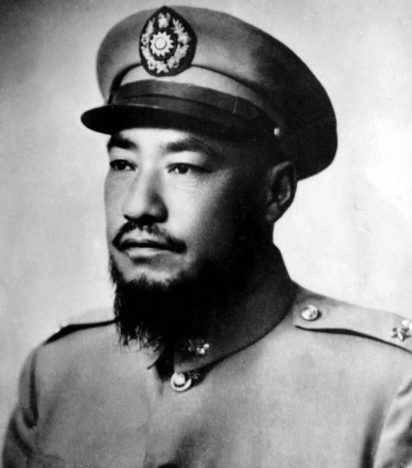
Bai Chongxi 白崇禧 one of a warlord that ruled Guangxi during KMT era and became DM
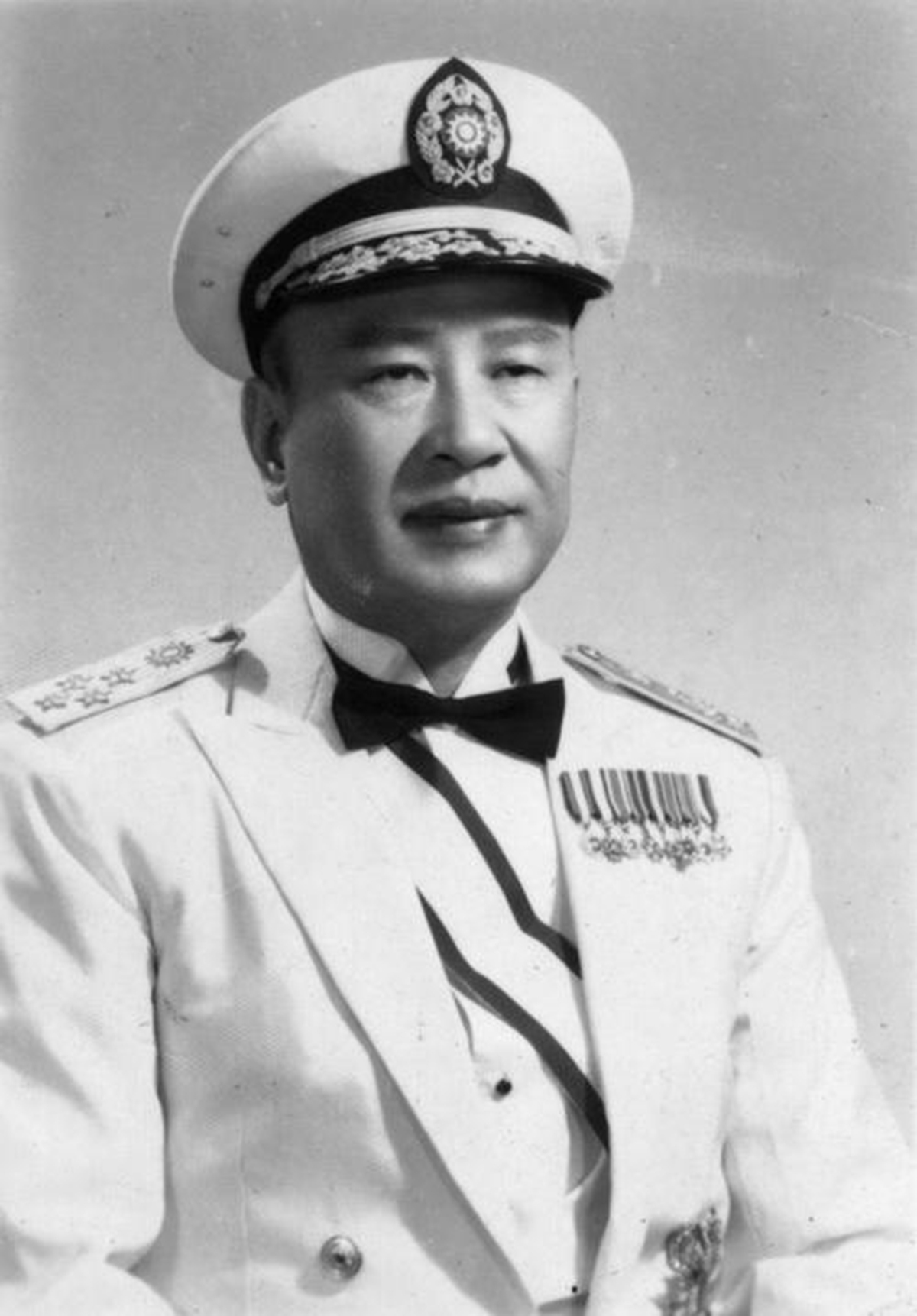
Zheng He 鄭和 (13711433) was a Muslim Hui-Chinese court eunuch of the Ming dynasty, mariner, explorer, diplomat and fleet admiral, who commanded voyages to Southeast Asia, South Asia, the Middle East, Somalia and the Swahili coast, collectively referred to as the "Voyages of Zheng He" from 1405 to 1433.

Zheng-He-7th-expedition-map

A display at the Ibn Battuta Mall in Dubai, UAE, compares the size of ships used by Zheng He and by Christopher Columbus.

Zhenghe's tomb in Nanjing

Hu Songshan (18801956)虎嵩山 imam of the Yihewani and a nationalist

Ma Fuxiang 马福祥 (1876-1932) Qing general, military governor for various provinces later

Ma Bufang 马步芳 (19031975) one of the Ma clique during KMT era who ruled Qinghai

Bai Chongxi 白崇禧 one of a warlord that ruled Guangxi during KMT era and became DM

Similar threads
- Replies
- 138
- Views
- 7K
- Replies
- 0
- Views
- 511
- Replies
- 6
- Views
- 1K
- Replies
- 4
- Views
- 525




